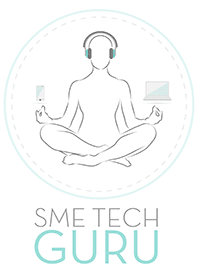By Bruce van Wyk, Director, PaySpace
People analytics is going through a major shift. It’s no longer just an HR tool used to find and flag information. It’s now plugged into various business functions, to improve operations across an organisation. Through the use of data and real-time apps to measure, report and understand employee performance, people analytics is increasingly shaping and changing how we work.
This trend emphasises the importance of transparency. Companies that don’t encourage inter-departmental collaboration and data sharing do themselves a disservice. When crucial information remains stuck in one team, or on one computer, it puts the business at risk. To avoid this, payroll and HR departments need to step out of their comfort zones and eradicate any data silos.
Data-driven business insights
The widespread adoption of cloud HR systems has increased the importance and value of data. Businesses are investing in programs that literally run on data. These cover various employee related functions like workforce planning and talent management. Traditionally, people analytics simply looked at employee engagement and retention. However, it now offers company-wide, digital solutions that enable businesses to analyse their processes on a granular level, identify any operational issues and needs – and take action before they become a problem.
People analytics has indeed advanced. But while many businesses are aware of the new benefits, adoption rates are low. Deloitte’s 2017 Global Human Capital Trends shows that 71% of companies prioritise people analytics – yet actual implementation has been slow. The number of organisations that use analytics to link HR data to business results is still very low and barely increases year on year. There is a severe lack of readiness hampering adoption. Only 8% of respondents said they have access to usable data, a very small pool (9%) think they know which talent dimensions are responsible for organisational performance and only 15% use HR and talent scorecards to measure management.
This suggests that many companies are suffering as a result of HR and payroll data being trapped in silos. When critical information is locked within specific departments and teams, businesses are unable to benefit from people analytics.
Unlocking data
To benefit from people analytics, a company needs freely available access to information. Without relevant, updated software, data will remain trapped in excel spreadsheets for example, or on desktop computers. Old, outdated software encourages data silos and makes sharing the latest documents and files much more challenging. It’s very easy for crucial insights and opportunities to get lost in inboxes and disappear.
When company information is transparent and easily accessible, managers don’t have to spend valuable time searching through employee data. All the information they need to make decisions in the best interests of the business is at their fingertips. They can pull fresh or historical data related to new engagements and terminations, training and employment equity and leave balances at a moment’s notice.
Cloud-based data analytics software is key to retrieving powerful business information and using it to improve operations. It’s collaborative, enabling colleagues to work together in real-time. There is no hunting for the latest version; individual or group edits are made, tracked and accepted live. Results are achieved fast and projects are completed quickly.
To get the most from HR and payroll data, businesses need to ensure that their software is up-to-date and includes a people analytics component. Modern payroll systems are no longer simply ‘HR software’ – they are a business imperative.


